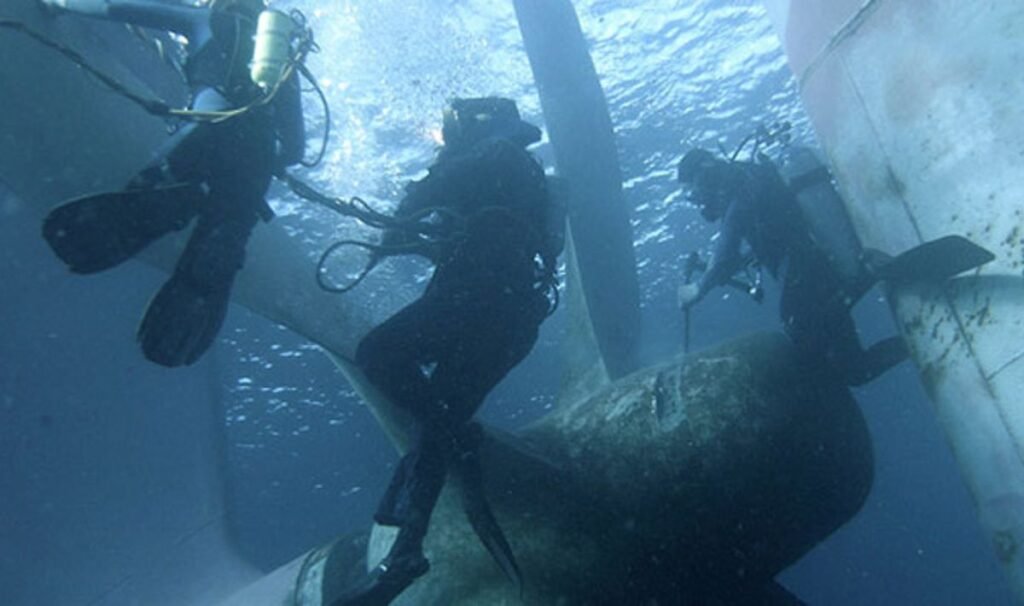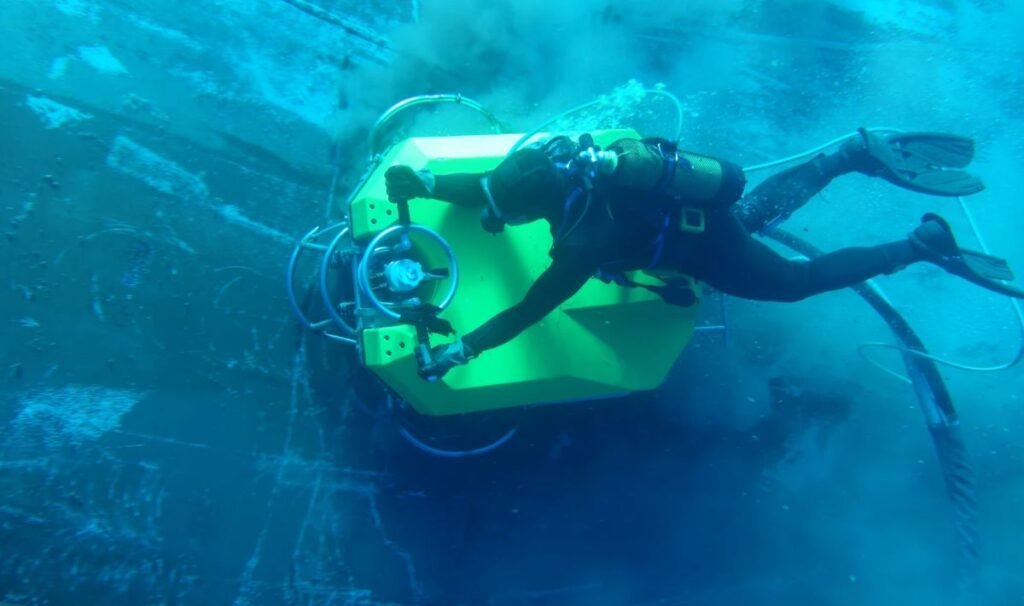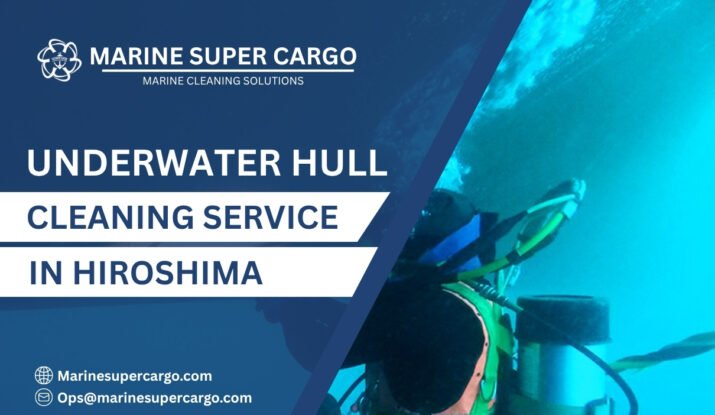In the vibrant maritime hub of Hiroshima, your vessel doesn’t just float—it performs a delicate dance beneath the surface, slicing through the waters along Japan’s scenic Seto Inland Sea. But lurking below is a stealthy saboteur: biofouling. Over time, your hull gathers marine growth—barnacles, algae, and other organisms—that stealthily slow you down and boost your fuel costs. That’s why underwater hull cleaning in Hiroshima is crucial for every boat owner, skipper, and commercial fleet operator serious about performance, cost-saving, and environmental responsibility.
Biofouling in Hiroshima’s Coastal Waters – The Hidden Threat
Biofouling, if left unchecked, is like a creeping vine wrapping tightly around your vessel’s hull. Hiroshima’s temperate climate and nutrient-rich waters encourage this marine “growth spurt.” Within mere weeks, even the cleanest hull begins to accumulate slime, barnacles, and crustaceans. This thick layer acts like a water-repelling drag strip, slowing your vessel, increasing engine load, and leading to inefficient fuel consumption. Beyond just financial concerns, fouling can clog water intakes, damage pumps, and hasten corrosion. It also poses significant environmental challenges by transporting invasive species across delicate marine ecosystems.
How Often Should You Schedule Underwater Hull Cleaning in Hiroshima
There’s no one-size-fits-all answer, but regularity is key. For many vessels in Hiroshima’s waters, cleaning intervals range between 3 to 6 months. Commercial boats, ferries, and frequently docked vessels tend toward cleaning every 2 to 3 months to preserve efficiency. Leisure boats or seasonal users may extend intervals slightly but always benefit from inspections. Other factors shaping your cleaning schedule include:
- Vessel type and water exposure
- Age and condition of anti-fouling coatings
- Mooring location and length of dock time

Popular Methods for Underwater Hull Cleaning in Hiroshima
Hiroshima’s hull cleaning ecosystem blends skilled human effort with leading-edge technology.
Diver-Assisted Cleaning – The Hands-on Approach
Experienced divers equipped with specialized brushes and scrapers make up the backbone of underwater hull cleaning in Hiroshima. They clean hulls meticulously, working around propellers, rudders, and water intakes, capturing video evidence for vessel management. Divers adjust pressure and tools according to paint type, safeguarding antifouling coatings while removing tough biofouling.
Robotic and ROV Technologies
The tech-savvy harbor has embraced the rise of remotely operated vehicles (ROVs). These systems use rotating brushes or water jets to clean without human risk, often combined with debris capture technology to prevent pollution. ROVs can clean while vessels are at berth, saving time and improving safety.
High-Pressure Water Jets and Other Innovations
High-pressure water jet systems provide a chemical-free way to blast away heavy marine growth. When paired with filtration devices that capture waste, they minimize environmental impact. Innovations like the HullWiper system use adjustable seawater pressure to clean thousands of square meters per hour with high efficiency.
How to Choose the Right Service for Underwater Hull Cleaning in Hiroshima
Finding the best provider for underwater hull cleaning in Hiroshima requires attention to:
- Licensed, certified divers or ROV operators
- Experience with your vessel’s type and size
- Transparent pricing and thorough pre- and post-clean inspections
- Use of environment-friendly capture technology to prevent waste discharge
- Positive local reputation and compliance with Japanese maritime regulations
Step-by-Step: What to Expect From a Professional Underwater Hull Cleaning in Hiroshima
- Hull Inspection: Divers or ROVs evaluate biofouling severity and check the hull’s physical condition.
- Setup and Safety Checks: Safety equipment and cleaning devices are tested and prepared.
- Cleaning Operations: Systematic, section-by-section cleaning using chosen tools ensures complete fouling removal.
- Debris Collection: Waste is captured or vacuumed to prevent pollution and comply with environmental protocols.
- Final Inspection and Reporting: Detailed before-and-after imaging with notes on hull condition form part of an owner report.
Benefits of Routine Underwater Hull Cleaning in Hiroshima
Improved Vessel Performance and Fuel Efficiency
Removing biofouling reduces drag dramatically, meaning you sail faster and consume less fuel—sometimes cutting fuel bills by as much as 15%.
Environmental Compliance and Protection
Routine underwater hull cleaning, when paired with responsible waste capture systems, helps Hiroshima uphold strict national and international environmental standards—minimizing ecological harm and maintaining port integrity.
For more on Japan’s maritime environmental policies, visit the Japan Coast Guard (MLIT).
Extending the Life of Your Hull and Propulsion System
Biofouling accelerates corrosion and coating degradation. Early and regular cleaning preserves your investment and limits costly repairs.
Safety, Regulations, and Environmental Standards in Hiroshima
Maritime safety is paramount in Hiroshima. All underwater hull cleaning must be conducted by certified professionals following Japan Coast Guard regulations. This includes strict diver safety protocols and environmental restrictions. Discharge of paint chips or fouling debris into the water is strictly prohibited—authorized providers use capture and filtration technologies to ensure eco-compliant operations.
For global regulatory alignment and best practices, providers often refer to standards set by the International Maritime Organization (IMO).
Typical Costs for Underwater Hull Cleaning in Hiroshima
Costs vary based on vessel size, fouling extent, and cleaning method:
- Small private boats: ¥30,000 – ¥80,000 per clean
- Medium vessels: ¥80,000 – ¥200,000
- Large commercial ships: ¥200,000+ to several hundred thousand yen, especially for robotic or advanced cleaning services
Long-term contracts generally reduce costs and optimize hull maintenance schedules.

How to Prepare Your Vessel for an Underwater Hull Cleaning in Hiroshima
- Share hull and paint history with your cleaning operator
- Clear all loose equipment from the hull vicinity
- Ensure closure of underwater intakes and sea chests
- Coordinate with port or marina officials about cleaning schedules
- Maintain a logbook tracking cleaning and maintenance history
The Future: New Trends and Technologies in Hull Maintenance
Hiroshima is at the forefront of adopting:
- AI-driven robotic cleaners capable of hull inspection and cleaning
- Eco-friendly antifouling alternatives reduce cleaning frequency
- Data analytics for predictive maintenance scheduling
- Enhanced debris capture systems ensuring zero discharge compliance
Conclusion
The secret to smooth sailing in the historic port of Hiroshima lies beneath your vessel’s waterline. Regular, professional underwater hull cleaning in Hiroshima ensures optimal speed, efficient fuel use, environmental stewardship, and extended hull life. Embrace trusted service providers, integrate modern technologies, and maintain a proactive maintenance schedule to keep your vessel—and the waters of Hiroshima—healthy and ready for countless voyages.
FAQ:
Q1. How often should underwater hull cleaning in Hiroshima be performed?
Typically, every 3 to 6 months, depending on vessel usage, hull coating, and fouling rates.
Q2. Will cleaning harm my antifouling paint?
Professional cleaning uses carefully selected tools and techniques to preserve paint integrity and maximize longevity.
Q3. Are robotic cleaning services available in Hiroshima?
Yes, robotic and ROV services are increasingly popular for their efficiency, environmental benefits, and safety.
Q4. Is underwater hull cleaning environmentally safe?
When done with debris capture and filtration systems, cleaning is compliant with environmental standards and minimizes pollution.
Q5. What is the typical price range for hull cleaning in Hiroshima?
Prices vary widely, from about ¥30,000 for small vessels to over ¥200,000 for large ships, depending on biofouling levels and cleaning technology used.


